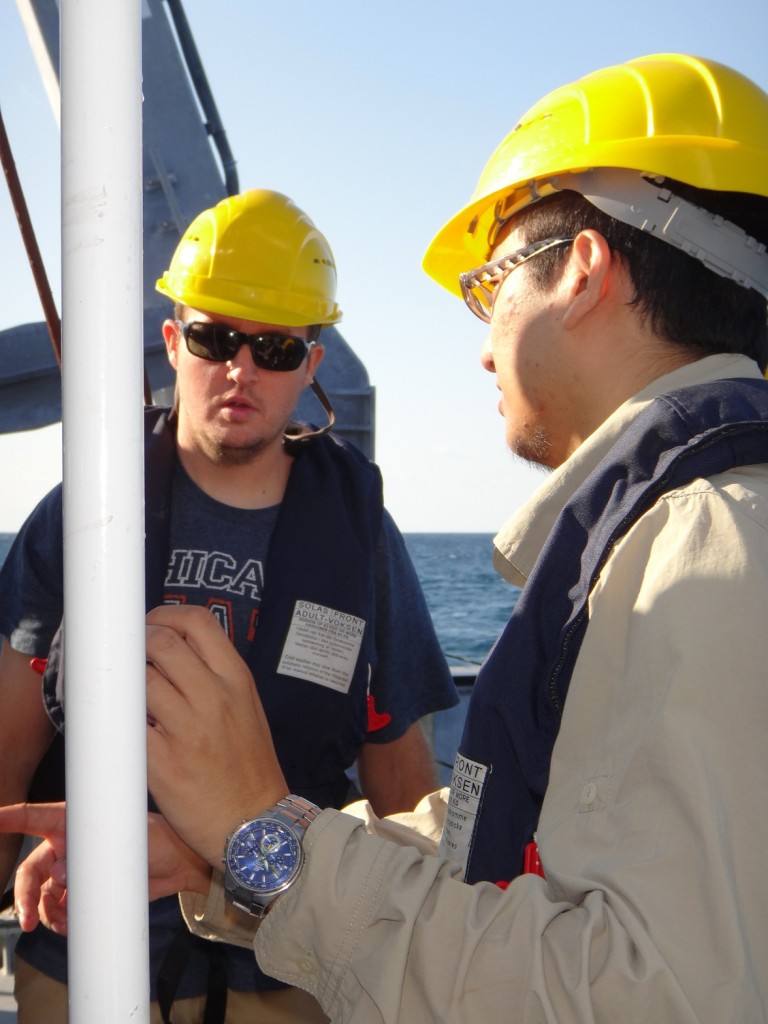Dr. Michael Wetz, along with his undergraduate students are collecting water samples throughout the water column using a CTD (Conductivity, Temperature, and Depth) sensor. A Profiling CTD measures water parameters as it travels through the water as it is lowered over the stern of the Schmidt Ocean Institute’s Research Vessel Falkor.
As the CTD travels through the water column, the science team will stop it and trigger it to collect water samples. The water samples will be analyzed back on land to study the chemistry of the water and the types of microorganisms in the water. Dr. Wetz is targeting single-cell protists or plant-like organisms called phytoplankton. Specifically he is hunting down the “dinoflagellates” or the “Red tide”. When large concentrations appear on the coast, they can turn the water red, hence “Red tide”. When phytoplankton blooms get too dense, some can release toxins in the water while others can trigger oxygen deprivation. These conditions can be harmful to ocean life and humans.

Dr. Michael Wetz discussed studies of plankton and nutrient distributions off the South Texas coast. Video credit: Dr. Stacey D. Lyle at Texas A&M University-Corpus Christi
Safety officer Thiago Da Sliva discusses aspects of his work on on supporting the research projects students work onboard R/V Falkor. Video credit: Dr. Stacey D. Lyle at Texas A&M University-Corpus Christi
-Written by Dr. Stacey D. Lyle for Schmidt Ocean Institute
FK005c-2012
Coverage Around the Web:
Texas A&M University- Corpus Christi Expedition Blog

